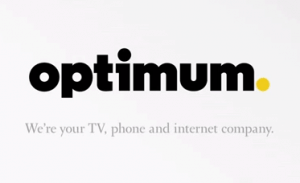
Cablevision’s executive suites are filled with intrigue and family politics. — Phillip Dampier
Cablevision’s quarterly results conference call last week was an exercise in obfuscation.
Senior management at the cable operator that serves parts of New York, New Jersey and Connecticut announced some difficult financial results, including the fact the company lost at least 39,000 customers during the last quarter — a significant number considering Cablevision only serves 3.6 million customers as of the end of December. At least 11,000 of those customers stopped paying their bills and disappeared, presumably because their homes and businesses were victims of Hurricane Sandy. But company officials admitted they also lost high-speed Internet customers because of a recent price increase and ongoing heavy promotional activity from their biggest competitor — Verizon FiOS. The phone company has offered triple play packages as low as $89 a month with $300 debit card rebates, which makes hiking rates untenable.
Cablevision CEO James Dolan has been ducking hard questions from Wall Street analysts concerned about the company’s spending and marketing, the loss of subscribers, and fallout from a 2011 management shakeup. Richard Greenfield, an analyst at research firm BTIG, has been frustrated getting answers from the Dolan family that has controlled Cablevision for decades, tweeting Cablevision executives stopped taking his questions on regular conference calls after he began asking some of those hard questions.
Cablevision’s Upgrades Will Continue; Company Wants an Improved Subscriber Experience

Greenfield
One of the problems Verizon FiOS’ fiber to the home network brings Cablevision as its largest competitor is fiber technology is superior to Cablevision’s cable network infrastructure. Verizon has been a formidable challenger. This has forced the cable operator to make dramatic improvements, particularly in its broadband product, to stay competitive. But some of these upgrades have been delayed by the effects of Hurricane Sandy, which affected 60 percent of Cablevision’s subscribers in the tri-state area.
Cablevision has been forced to offer customers service credits, substantially curtail sales and advertising efforts, and suspend the non-pay collection rules and disconnect policy.
Cablevision has also committed itself to an expensive robust Wi-Fi network to differentiate itself from Verizon. Cablevision has an extensive Wi-Fi presence in its service area, offering unlimited free service for its customers. Verizon does not. Cablevision ended 2012 with more than 67,000 installed hotspots, with more than 30% of Optimum Online customers using the service in 2012.
At the same time, cable television programming costs have skyrocketed, but Cablevision has generally avoided raising prices fearing Verizon would poach unhappy subscribers.
Drama Surrounding Executive Changes

Internet comes last?
In 2011, Cablevision accepted the resignation of Tom Rutledge, former chief operating officer. Richard Greenfield dismissed Cablevision’s statements about his departure as “spin,” and claims the real reason Rutledge left for Charter Communications is that Jim Dolan became dissatisfied with Rutledge’s performance. But that poor performance could also be attributed to some of the company’s own decisions, particularly when it engaged in multiple battles with programmers during 2010 that forced popular cable networks and broadcasters temporarily off Cablevision lineups. Greenfield suggests the biggest impact was felt when the cable operator dropped the local Fox station right in the middle of the World Series. BTIG believes subscriber losses accelerated for these reasons (and Verizon’s aggressive marketing efforts) and helped the company see its earnings and subscriber trends hurt.
Jim Dolan has reportedly taken a more hands-on approach at Cablevision and even appointed his wife Kristin to assume a stronger role in how Cablevision markets itself to customers.
The result was a Cablevision rebranding that Greenfield criticized in September as “firmly entrenched in the past,” because it emphasizes television and phone service over broadband.
Avoiding Tough Questions
Several of the questions Greenfield wanted answered, but could not, dealt with the transformation of part of Cablevision’s service area thanks to Sandy and some of the company’s earlier missteps:
- Permanent System Loss: How many Cablevision homes in the service area will no longer exist or take years to rebuild?
- Recapture Suspended Accounts: At least 24,000 video subscribers disappeared after Hurricane Sandy. Has this number changed recently and are there plans to win these customers back?
- Verizon FIOS was back up and running in storm-damaged areas before Cablevision. How has this affected your operations?
- Marketing Missteps: Are there plans to correct the marketing deficiencies from the 2012 campaign in 2013, particularly for broadband?
- Onyx Guide and Network DVR: Neither are well-received by customers. The Onyx on-screen Guide has been slammed for not working properly, being cumbersome to use, and difficult to read. The remote DVR has been criticized for its poor quality and reliability over traditional in-home DVRs. What will Cablevision do to address these complaints?
- Why is Cablevision challenging Viacom in court over cable network programming costs when sports programming is where the real costs are?


 Subscribe
Subscribe